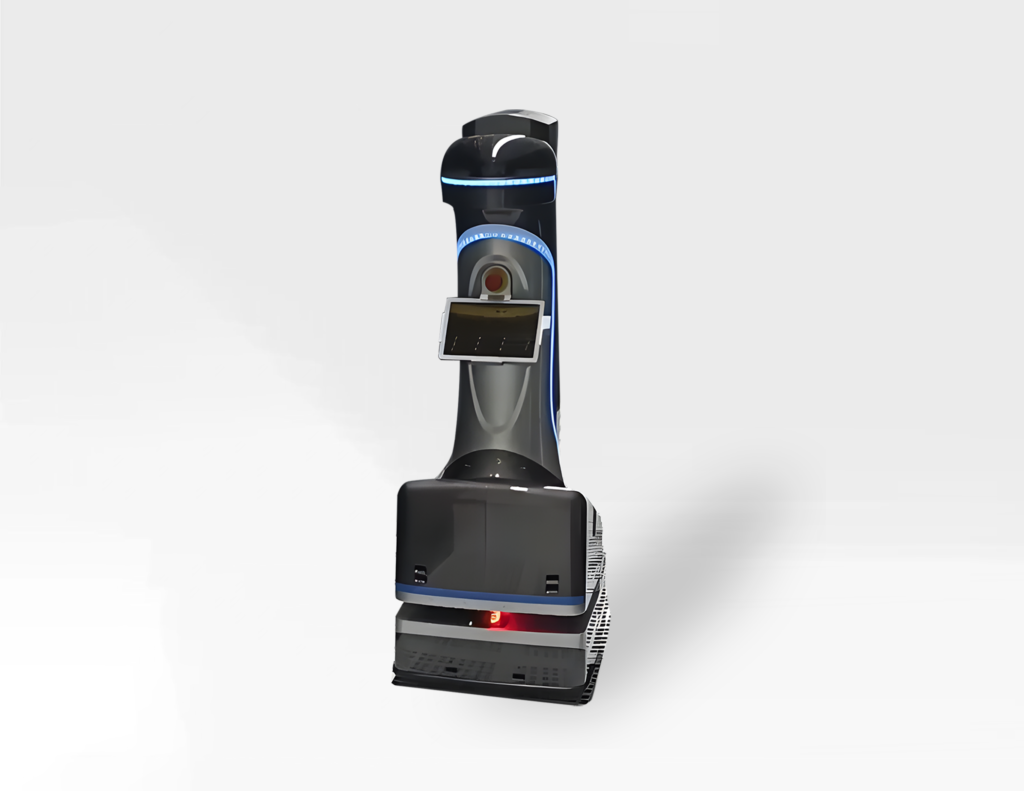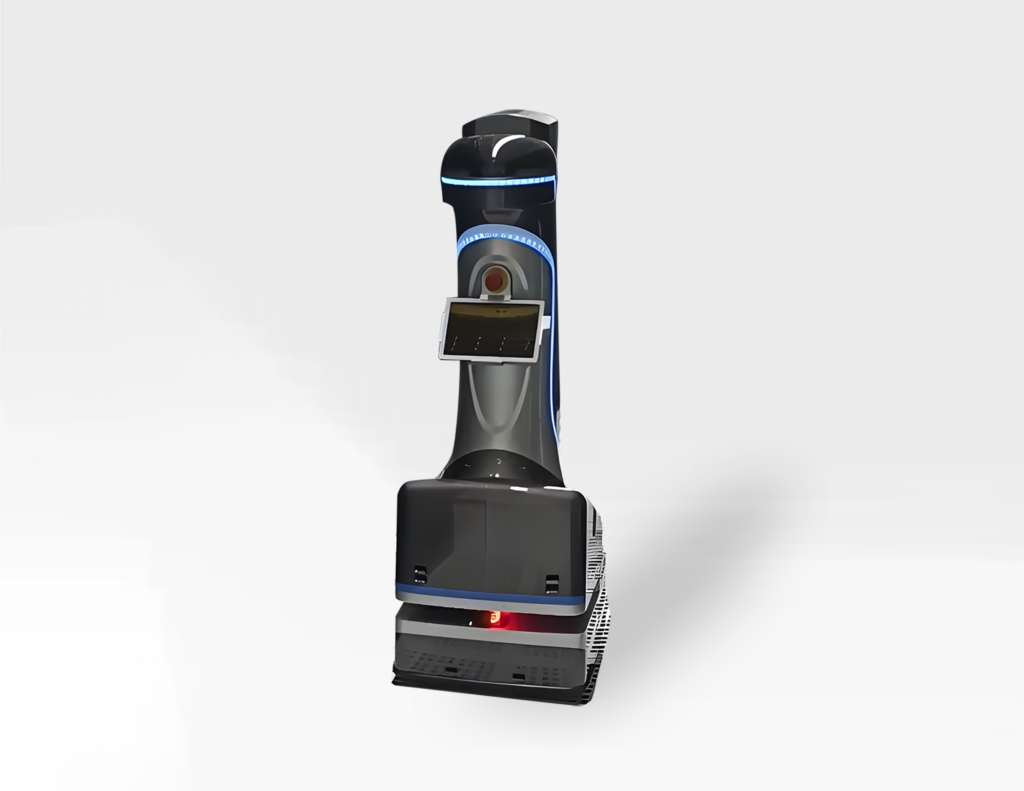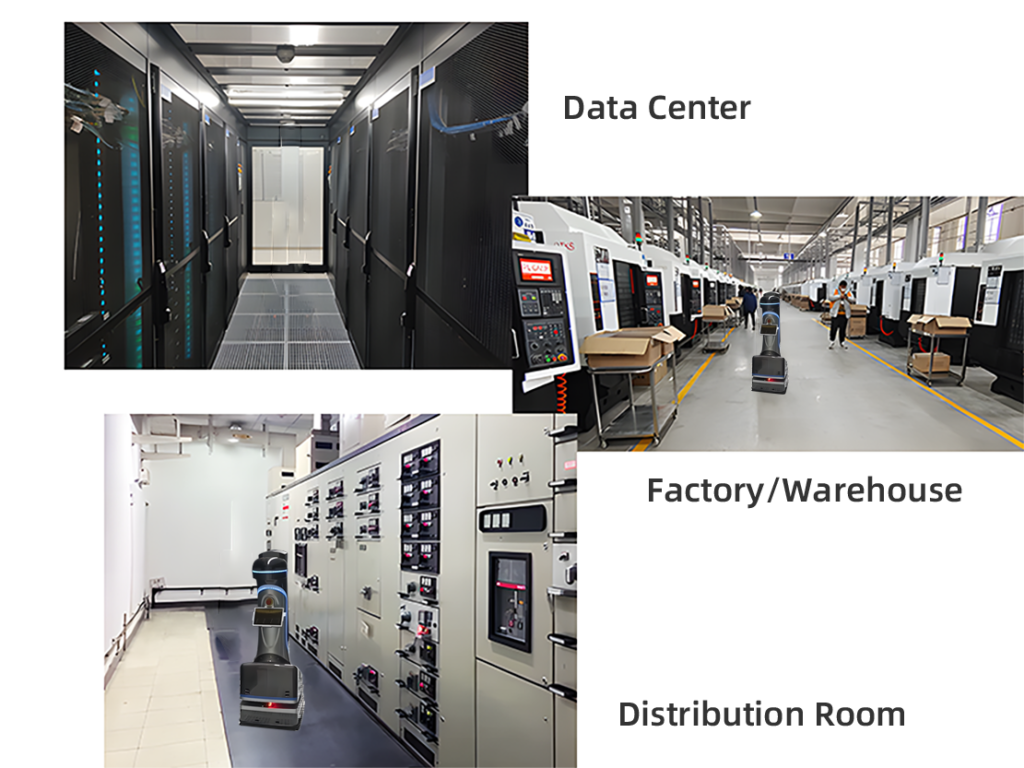Datacenter Robot
Automatic inventory of equipment is facilitated through the recognition of most equipment QR codes,asset tags, other means .It enables the detection of abnormal movements of asset equipment. The robot collaborates with the software platform to customizable issue timely audible and visual alams,notifying operations and maintenance personnel.Additionally, it generates asset inventory data reports.




Intelligent Inspection
With the collaboration of deep learning and machine vision algorithms, the system can scan, learn, and accumulate the status of indicator lights for each cabinet. During each inspection, the robot observes changes in indicator lights, instrument panels, and switches through cameras. When anomalies are detected during inspections, the robot will notify the data center administrator through the inspection management platform
Notification method:


Temperature Monitoring
- Real-time temperature monitoring is achieved through infrared cameras, enabling high-temperature warnings and fire detection.
Smart Security
- External personnel access authentication is achieved through facial recognition , other account verification and other methods, addressing the shortcomings and vulnerabilities of manual review processes in terms of timeliness and security. When external personnel are conducting internal operations, the robot can follow along for real-time video monitoring, generate on-the-job recordings, and engage in real-time communication with the control room, facilitating maintenance personnel in problem-solving and enhancing efficiency.


Asset Inventory
- Automatic inventory of equipment is facilitated through the recognition of equipment QR codes,asset tags,and other means. It enables the detection of abnormal movements of asset equipment. The robot collaborates with the software platform to issue timely audible and visual alarms, notifying operations and maintenance personnel. Additionally, it generates asset inventory data reports.
Design dimensions: L581mmW551mmH (lowered 1372mm ~ raised 2122mm); Shell supports V0 level flame retardancy.
Maximum running speed of inspection robot: 1200mm/s
Maximum speed emergency stop distance: 0.20m
Climbing angle: 5°
Total weight: 90kg (±5kg)
Main control unit: 4-core CPU, 256-core GPU
Dual-band WiFi module: supported
4G/5G communication (optional): Built-in 4G/5G communication module
Lifting device: equipped with a two-stage lifting system, lifting range 0mm~1500mm
Industrial camera: Uses a 12.2-megapixel industrial camera, resolution 4100*3036 Number of industrial recognition cameras: 3
Thermal imaging camera: Supports temperature detection of 0U-52U equipment; temperature range -20℃~+550℃
Network camera: 2-megapixel high-definition network camera, resolution 1920×1080
Facial recognition camera: Resolution 1920×1080, effective distance 0.4m~2m
Single cabinet inspection time: <15s
Touchscreen: 13.3 inches, resolution 1920×1080, supports multi-touch
6MIC array: Supports wake-up pickup, directional pickup, omnidirectional pickup, 360° sound source positioning
Environmental monitoring sensor (optional): temperature, humidity, gas, PM2.5, noise
High-level obstacle avoidance: Equipped with RGBD high-level binocular obstacle avoidance camera
Overcoming obstacle capability: 10mm
Product Specifications
Infrared pit detection sensor: Equipped with 2 infrared anti-fall sensors, supports detection of pits over 4cm
Ultrasonic sensor: The robot is equipped with 4 in total, supports obstacle detection from 1cm to 80cm
Lidar: Scanning angle 270°, frequency 15Hz, angular resolution 0.33°
Repeat navigation positioning error: ±20mm
Battery: 28Ah, maximum discharge current 25A; charging time from 0% to 100% ≤3.5 hours, endurance time ≥8 hours
Running status indicator LED strip: Equipped with RGB LED strip, displaying robot status.
Application Scenarios
D1 is widely applicable in various scenarios including data centers, power distribution rooms, switch rooms, factory workshops, and more.


